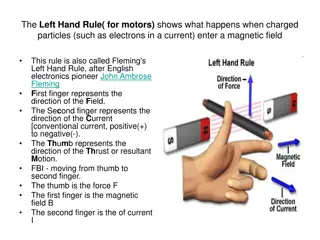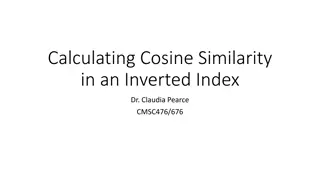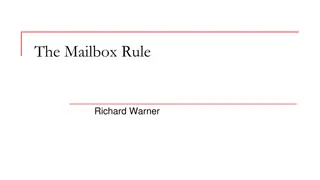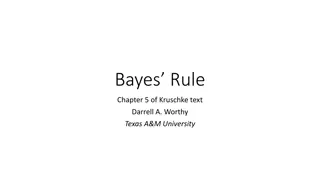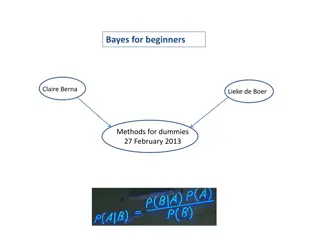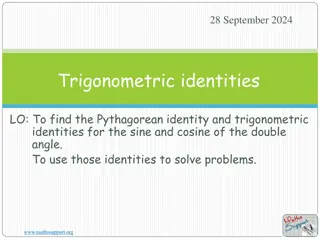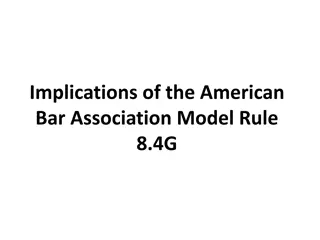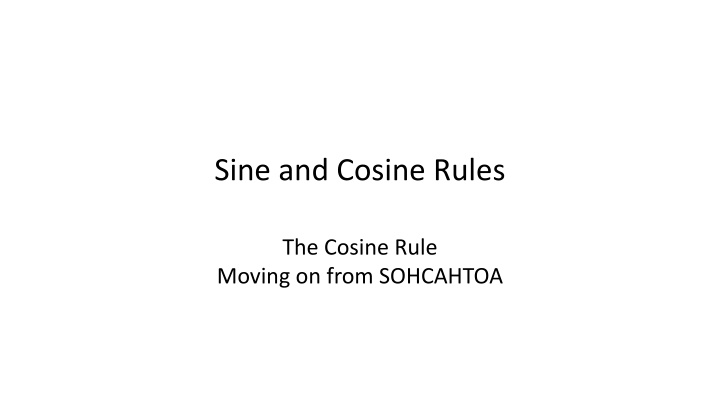
Trigonometry: Sine and Cosine Rules
Dive into the world of trigonometry beyond right angles with the Sine and Cosine Rules, exploring how to find side lengths and internal angles in various types of triangles. Discover the Cosine Rule's application in calculating side lengths and angles, with helpful examples and color-coded explanations.
Uploaded on | 1 Views
Download Presentation

Please find below an Image/Link to download the presentation.
The content on the website is provided AS IS for your information and personal use only. It may not be sold, licensed, or shared on other websites without obtaining consent from the author. If you encounter any issues during the download, it is possible that the publisher has removed the file from their server.
You are allowed to download the files provided on this website for personal or commercial use, subject to the condition that they are used lawfully. All files are the property of their respective owners.
The content on the website is provided AS IS for your information and personal use only. It may not be sold, licensed, or shared on other websites without obtaining consent from the author.
E N D
Presentation Transcript
Sine and Cosine Rules The Cosine Rule Moving on from SOHCAHTOA
Sine and Cosine Rules Previously we introduced Trigonometry and focused on right angles triangles, to bring in Pythagoras Theorem and some basic Trig Identities . Pythagoras Theorem works only for triangles with one right angle , but of course there are other sorts of triangles such as equilateral, scalene and isosceles that don t have any internal 90o angles so what about these? It s not a case of SOH CAH TOA here, there is a rule for finding side lengths and internal angles, in fact two rules known respectively as the SINE rule and the COSINE rule, effectively extensions of the Pythagoras Theorem.
Sine and Cosine Rules Previously we introduced Trigonometry and focused on right angles triangles, to bring in Pythagoras Theorem and some basic Trig Identities .
Cosine Rule Previously we introduced Trigonometry and focused on right angles triangles, to bring in Pythagoras Theorem and some basic Trig Identities . In the Cosine Rule, the requirements are seemingly simpler to remember, however some of the algebraic manipulations required can be testing. A c b C B a
Cosine Rule The colour coding helps with the relationships in the rule A It is the Cosine of the angle opposite the side being calculated which is used in the expression. c b The following two alternatives may also apply: C B a
Cosine Rule If the 2 sides and angle between rule is satisfied, the Cosine Rule can be applied in this format. A c Let s look at the triangle shown, as an example: 15cm Q. From the information given, calculate the value of side c in cm. 80o B 19cm
Cosine Rule A c Q. From the information given, calculate the value of side c in cm. 15cm 80o B 19cm
Cosine Rule The algebraic complication that arises with the Cosine Rule is the need to permute the equation when all three sides are known, and the angles are being sought. A 22.1 cm 15cm Q. From the side lengths information given, calculate the values of all three angles in the triangle. C B 19cm
Cosine Rule Q. From the side lengths information given, calculate the values of all three angles in the triangle. A 22.1 cm 15cm C B 19cm
Cosine Rule A 22.1 cm 15cm C B 19cm
Cosine Rule A 22.1 cm 15cm C B 19cm
Cosine Rule So ..... A 22.1 cm 15cm C B 19cm From the 180 degree rule of triangles ....





